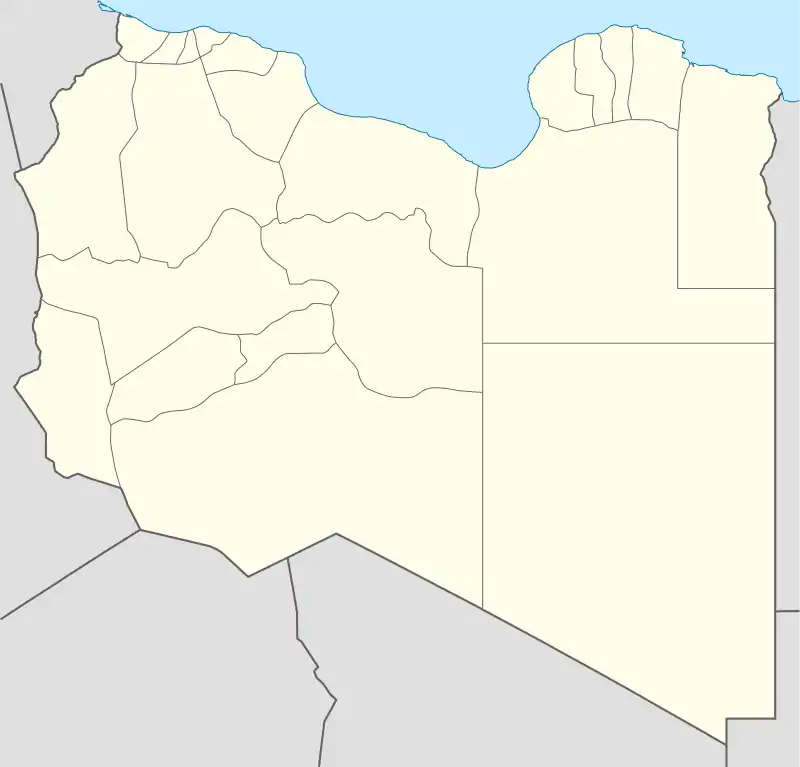Germa
Germa (Arabic: جرمة), known in ancient times as Garama, is an archaeological site in Libya. It was the capital of the Garamantian Kingdom.
Germa
جرمة | |
|---|---|
_-_Ruinen_der_antiken_Stadt_Garma_02.jpg.webp) Ruins of Germa | |
 Germa Location in Libya | |
| Coordinates: 26.544°N 13.064°E | |
| Country | |
| Region | Fezzan |
| District | Wadi al Hayaa |
| Population (2006)[1] | |
| • Total | 4,839 |
| Time zone | UTC + 2 |
The Garamantes were a Berber people living in the Fezzan in the northeastern Sahara Desert. Garamantian power climaxed during the second and the third centuries AD, often in conflict with the Roman Empire to the north. Garama had a population of some four thousand and another six thousand living in villages within a 5 km radius.
The Garamantes often conducted raids across Rome's African frontier, the Limes Tripolitanus, and retreated to the safety of the desert. In 203 the Roman Emperor Septimius Severus launched a campaign deep into the Sahara, capturing Garama, but he abandoned it soon after.[2]
The city was conquered by Uqba ibn Nafi in 669 AD.[3]
Archaeological work at Germa has most recently been conducted by Prof. David Mattingly's Fazzan Project, which has continued the work of Charles Daniels and Mohammed Ayoub. The Fazzan Project is about to publish the second of four planned volumes based on its work.
References
- Amraja M. el Khajkhaj, "Noumou al Mudon as Sagheera fi Libia", Dar as Saqia, Benghazi-2008, p. 121.
- Birley, Anthony. Septimius Severus, the African emperor. (2000), p. 153
- Salem Mohammed ez Zawam, "Mu’jam al Amakin al Jughrafiya fi Libia", Dar wa Maktabat ash Sha’b, Misratah, 2005, p.51.
External links
![]() Media related to Germa at Wikimedia Commons
Media related to Germa at Wikimedia Commons
- Germa - Lexiorient
- Toby Savage, photographer
- Nick Brooks' Fezzan Geoarchaeology website
- Germa (Roman Garama)
